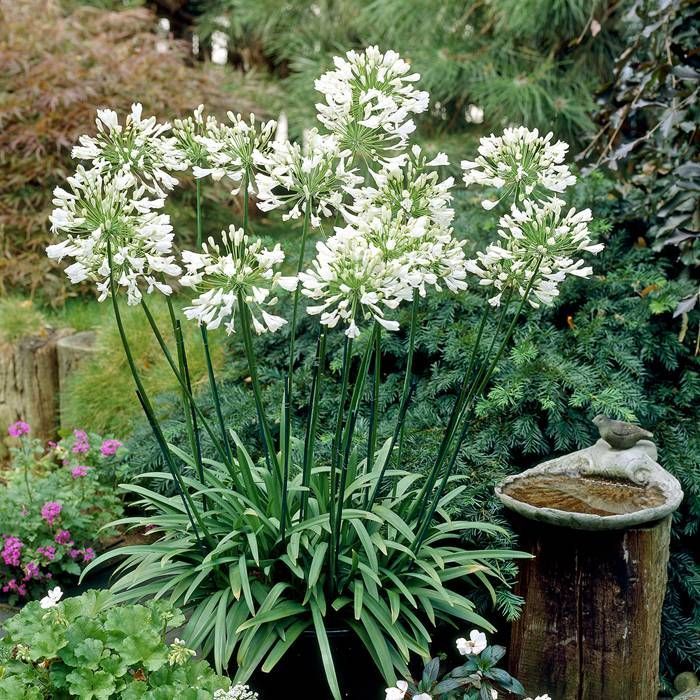Agapanthus Care Tips for Lush and Vibrant Flowers
Agapanthus Care Tips for Lush and Vibrant Flowers
Blog Article
Mastering the Art of Agapanthus Care: Important Actions for Healthy And Balanced Growth and Lively Blooms
In the realm of gardening, the farming of agapanthus stands as a fulfilling endeavor for those that seek to support these elegant flowering plants. From selecting the right range to grasping trimming methods, the trip towards cultivating flourishing agapanthus plants is complex and holds the key to unlocking the full potential of these botanical gems.

Picking the Right Agapanthus Range

When selecting the right Agapanthus range for your yard, think about elements such as environment suitability, flower shade, and growth behavior. Furthermore, consider the climate in your area to ensure the Agapanthus range you select can prosper in your particular problems. Understanding the development behavior of various Agapanthus varieties is critical for appropriate placement within your yard.
Perfect Planting Problems
Considering the ideal ecological requirements is crucial for successful Agapanthus farming. Agapanthus grows in well-draining soil with a slightly acidic to neutral pH degree. When growing, pick a location that receives full sunshine to partial shade. In hotter environments, offering some afternoon color can prevent scorching of the fallen leaves. Agapanthus plants are delicate to cold temperatures and need to be safeguarded from frost during cold weather.
To make certain healthy and balanced growth and vivid blossoms, plant Agapanthus light bulbs at a depth of about 2-4 inches and area them 8-12 inches apart. Mulching around the base of the plants assists preserve dampness and reduces weed development.
Watering and Fertilizing Tips
Keeping proper dampness degrees and offering vital nutrients are vital elements in the treatment program for Agapanthus plants. When it pertains to sprinkling Agapanthus, it is crucial to strike an equilibrium. These plants favor regularly moist dirt but are susceptible to root rot if overwatered. Throughout the growing season, water deeply once a week, ensuring the soil is well-draining to stop waterlogging. In hotter climates or during periods of dry spell, even more regular watering may be needed to keep the dirt evenly damp. Nevertheless, minimize watering in the winter season to avoid waterlogged problems.
Fertilizing Agapanthus is important for promoting healthy and balanced growth and respected blossoms. Apply a well balanced fertilizer, such as a 10-10-10 formula, in the early springtime as brand-new development arises. Repeat this application every 6-8 weeks throughout the growing season. Avoid extreme fertilizing, as it can result in rich vegetation at the expense of blooms. Always follow the producer's instructions for appropriate dilution and application approaches. By following these watering and fertilizing pointers, you can ensure your Agapanthus plants prosper check out here and create vibrant, long-lasting flowers.
Pruning Techniques for Agapanthus
Pruning Agapanthus plants at the suitable times and with correct strategies is vital for maintaining their health and wellness and advertising optimum growth and flowering. The optimal time to prune Agapanthus is in late winter season or very early springtime prior to new growth emerges. Start by removing any type of dead or yellowing fallen leaves near the base of the plant. Cut them as short as possible without harming the arising shoots.
Deadheading invested flowers Discover More Here can likewise reroute the plant's energy right into creating even more flowers rather than setting seeds. If you desire to collect seeds for proliferation, leave some flowers to completely dry and mature on the plant.
Remember to utilize clean, sharp devices to make precise cuts and lower the danger of presenting conditions. Agapanthus. Regular trimming will certainly aid maintain your Agapanthus looking neat and healthy and balanced while making sure a bountiful screen of stunning blooms
Taking Care Of Typical Parasites and Diseases
After guaranteeing appropriate trimming strategies for Agapanthus, it is important to attend to typical pests and conditions that can affect the wellness and vitality of these plants. Agapanthus plants are usually sturdy but can still come down with certain problems. One common bug that impacts Agapanthus is the Agapanthus gall midge. This little, orange fly lays its eggs in the foliage, bring about altered development and blossom buds that fail to open. To combat this pest, prune and damage any type of damaged plant components and think about utilizing insecticidal soap.
Another typical issue is fungal leaf spot, which provides as dark sores on the leaves. To stop fungal illness, guarantee great air flow around the plants, prevent above watering, and eliminate any contaminated leaves immediately. Furthermore, Agapanthus plants can experience from root rot if they are planted in improperly draining soil. To avoid this, plant Agapanthus in well-draining dirt and stay clear of overwatering. By being attentive and taking prompt action versus pests and diseases, you can help your Agapanthus plants thrive and create lively blossoms.

Final Thought
In conclusion, mastering the art of agapanthus treatment involves selecting the right variety, offering ideal growing problems, correct watering and fertilizing, ideal pruning strategies, and attending to typical pests and diseases. By following these vital steps, you can ensure healthy and balanced development and lively flowers for your agapanthus this page plants. Bear in mind to on a regular basis monitor and maintain your plants to advertise their total well-being and long life.
To make certain healthy development and lively blossoms, plant Agapanthus bulbs at a depth of regarding 2-4 inches and room them 8-12 inches apart. By following these watering and feeding pointers, you can guarantee your Agapanthus plants flourish and produce vibrant, long-lasting blooms.
One usual insect that influences Agapanthus is the Agapanthus gall midge. In addition, Agapanthus plants can suffer from root rot if they are grown in badly draining dirt. By adhering to these crucial actions, you can guarantee healthy development and vivid flowers for your agapanthus plants.
Report this page